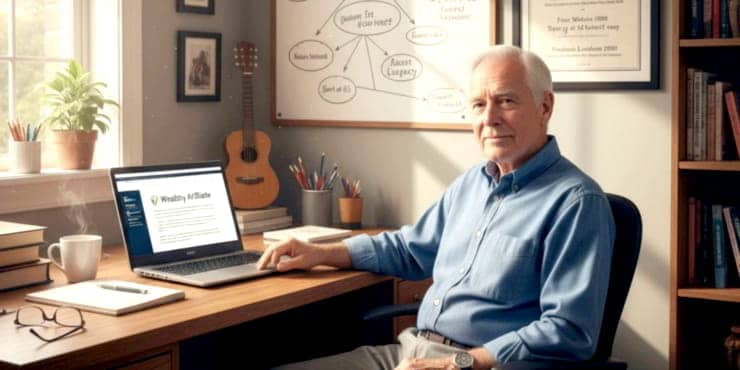Self‑Promotion Techniques That Feel Genuine

Estimated reading time: 9 Min
Promote your brand without cringe—discover authentic, psychology-backed self-promotion techniques that build trust and visibility.
Imagine standing in a crowded room full of professionals, each vying for attention.
What makes you, yes, you, stand out?
This isn’t about donning a neon suit in a sea of greys.
It’s about understanding and conveying your unique value—your personal brand.
In the digital world, creating a personal brand has moved from optional to absolutely essential.
It’s time to shatter the misconceptions that many have about self-promotion.
Self-promotion isn’t about inflating your ego or broadcasting every minor success from the rooftops.
It’s the art of presenting your skills, experience, and personality in a way that is reasonable and acceptable to others.
It’s about making your voice heard in the right way at the right time.
So, how do we move from the shadows of reluctance into the spotlight of recognition?
Let’s explore the world of personal branding, a journey that does not start with a camera or a keyboard but within the corners of your own mind.
Understanding Personal Branding
Personal branding seems to be the buzzword of the day, but strip away the jargon, and what are you left with?
Simply put, it’s the process of establishing a prescribed image or impression in the minds of others about an individual.
It’s what people say about you when you’re not in the room.
But there’s a twist: Your personal brand is deeply intertwined with your mindset.
The beliefs and attitudes you hold shape the brand that you project.
If you view yourself as a no-hoper, guess what?
You’ll most likely project a brand that mirrors this.
Personal branding has evolved from simple business cards and handshakes to complex digital ecosystems.
Your LinkedIn, your Twitter feed, your personal blog—they all paint a picture of who you are professionally and personally.
But before diving into our digital assets, we need to step back and understand the foundation of any strong brand: authenticity and self-awareness.
It’s about aligning your external brand with your internal values and seeing how your mindset shapes your professional image.
The Psychology Behind Self-Promotion Techniques
Now, let’s dive deeper into the murky depths of the human psyche.
Why is it that, when the spotlight turns our way, we often want to duck for cover?
Enter the imposter syndrome, the notorious thief of confidence, whispering that you’re not good enough and that any day now they’ll ‘find you out’.
But here’s the kicker: everyone feels this way at some point.
The trick is recognising that these feelings are normal, but they don’t define your value or capabilities.
We need to find the balance between humility and arrogance; it’s like walking a tightrope.

Lean too much one way, and you’re invisible; lean too far the other, and you’re insufferable.
The key?
Confidence, tempered with humility.
It’s about valuing your own worth while recognising that there’s always room for growth.
Lastly, let’s talk about the important concept of perception.
Our self-perception often differs drastically from how others view us.
Think about it; this discrepancy can muddy the waters of personal branding.
Your task is to bridge this gap, aligning how you see yourself with how you wish to be seen.
It’s a delicate balance, but essential for authentic self-promotion.
Crafting Your Unique Brand Identity
Every person is a mosaic of unique experiences, skills, and personality traits.
Your Unique Selling Proposition (USP) is what sets you apart from the crowd.
But identifying your USP isn’t about showcasing every skill you’ve ever acquired; it’s about highlighting the ones that truly define you.
Ask yourself: what are the skills or experiences that make you, unmistakably, you?
Then there’s the age-old debate: authenticity versus professionalism.
Can you be both genuine and professional?
Absolutely, you can!
Authenticity doesn’t mean airing all your laundry—dirty or clean—it means being true to your values and consistent in your actions.
It’s possible to be both authentic and professional if you understand that professionalism is about respect—respect for yourself and for others—and continuously learning.
Now, let’s not forget the power of storytelling.
Humans are wired to respond to stories.
They’re how we make sense of the world.
Your professional narrative is more than a list of jobs and qualifications; it’s a cohesive story that weaves together your past experiences with your future ambitions.
It’s about connecting the dots in a way that provides a clear picture to others of who you are and where you’re going.
Mindset Shifts for Effective Self-Promotion
Shifting from a fixed mindset to a growth mindset can transform not just your personal brand, but your entire life.
With a fixed mindset, challenges are threats, feedback is personal, and effort is for those who aren’t naturally gifted.
Switch that perspective to a growth mindset, and suddenly challenges become opportunities, feedback becomes a learning tool, and effort is the path to mastery.
Now, consider the power of positive thinking.
It’s not about blind optimism but rather about adopting a constructive attitude towards your self-promotion efforts.
Visualise success, anticipate challenges, and prepare responses.
It takes a little effort, but this mindset will not only improve your self-promotion skills but also attract positive opportunities and networks.
Facing rejection is an inevitable part of the self-promotion journey.
Here’s where your mindset makes all the difference.
Instead of viewing rejection as a setback, see it as a stepping stone.
Each ‘no’ brings you closer to a ‘yes’, and every failure is a lesson in disguise.
Cultivating resilience and perseverance is key to maintaining momentum in your personal branding efforts.
Strategies for Building and Promoting Your Brand
Effective networking is more than collecting business cards.
it’s about cultivating meaningful relationships.
Engage with your connections on a personal level.
Show genuine interest in their work and offer help without expecting anything in return.
Remember, strong networks are built on trust and mutual respect.
Nowadays, a robust online presence is non-negotiable for personal branding.
Whether it’s LinkedIn, a personal blog, or another platform, ensure your online content reflects your professional identity and values.
Share insights, participate in discussions, and showcase your expertise in a consistent and authentic manner.
Establishing yourself as a thought leader is a powerful way to enhance your personal brand.
Share your unique insights, challenge conventional wisdom, and add value to your industry.
Remember, thought leadership isn’t about having all the answers; it’s about asking and answering the right questions and sparking conversations.
Consistency is Key: Maintaining Your Personal Brand
Maintaining your personal brand requires consistency and authenticity.
Your actions, online and offline, should align with your brand values and message.

Regularly review and update your online profiles, portfolio, and resume to reflect your current skills and experiences.
Continuous learning and adaptation are crucial in today’s fast-paced world.
Stay abreast of industry trends, expand your skillset, and be open to feedback.
This will not only enhance your personal brand but also demonstrate your commitment to professional growth.
Feedback is a valuable tool for brand refinement.
Seek out constructive criticism from peers, mentors, and even online communities.
Use this feedback to fine-tune your brand and address any discrepancies between how you perceive yourself and how others perceive you.
Case Studies: Success Stories and Lessons Learned
Analyse the personal branding journeys of industry leaders and peers.
What strategies did they use?
What challenges did they face, and how did they overcome them?
These real-life examples can provide valuable insights and inspiration for your own brand-building efforts.
Reflect on personal branding failures as well.
What went wrong, and why?
Understanding these pitfalls can help you navigate your own branding journey more effectively.
Finally, gather tips and best practices from successful individuals.
How do they maintain their brand, and how do they adapt to changes?
Learn from their experiences to refine your own branding strategy.
Here are two real-life stories that showcase how individuals can use their professional platforms, combined with strategic content and advocacy, to build powerful personal brands that extend their influence beyond their immediate professional circles.
Case Study 1: Gary Vaynerchuk
Background: Gary Vaynerchuk is a Belarusian-American entrepreneur, author, speaker, and Internet personality.
He first gained prominence in the late 1990s after establishing one of the first e-commerce wine sites, WineLibrary, and transforming his family’s wine business from a $3 million to a $60 million business.
Challenge: Gary faced the challenge of transitioning from a wine business entrepreneur to a broader business and media expert.
He needed to establish a personal brand beyond the wine industry to achieve this.
Strategy: Gary used the power of content creation and social media to build his brand.
He started with “Wine Library TV,” a video blog on YouTube discussing and reviewing wines.
As social media platforms evolved, he became an early adopter of Twitter, Facebook, and later, Instagram and TikTok, using each platform to share his business insights, motivational talks, and personal life.
Outcome: Gary Vaynerchuk is now a highly influential figure in digital marketing and social media, with millions of followers across his platforms.
He has authored several best-selling books on marketing and business and is a sought-after public speaker.
He also co-founded VaynerMedia, a digital ad agency serving Fortune 500 clients.
Lesson Learned: Adaptability and foresight in leveraging new digital platforms for content distribution can significantly amplify personal branding efforts.
Gary’s ability to evolve with changing technologies and platforms has kept his brand relevant and influential.
Case Study 2: Sheryl Sandberg
Background: Sheryl Sandberg is the former COO of Facebook (now Meta Platforms) and author of the best-selling book, “Lean In: Women, Work, and the Will to Lead.”
She has been an advocate for women in business, pushing for more female representation in leadership roles.
Challenge: When Sandberg joined Facebook, she was already a seasoned executive from Google.
However, her challenge was to carve out a new influential public persona that would allow her to advocate for women’s leadership globally.
Strategy: Sandberg used her position at Facebook to amplify her voice.
Her book, “Lean In,” based on her experiences and insights into the challenges women face in the workplace, along with her advocacy work, helped establish her as a global icon for women’s empowerment.
She combined personal anecdotes with data-driven strategies to engage and inspire a broad audience.
Outcome: Sheryl Sandberg has become one of the most recognisable faces in the tech industry and a role model for women around the world.
Her “Lean In” initiative has sparked international discussions and movements towards gender equality in the workplace.
Lesson Learned: Using one’s platform and experiences to address broader societal issues can enhance a personal brand and drive significant social impact.
Sandberg’s approach shows how powerful combining personal advocacy with professional leadership can be in building a brand that transcends industries.
Summary: Your Brand, Your Future
Building a strong personal brand is a journey, not a destination.
It requires self-reflection, consistency, and a willingness to learn and adapt.
Remember, your personal brand is a reflection of your unique blend of skills, experiences, and personality.
It’s what sets you apart and makes you memorable.
Embrace the art of self-promotion with confidence and authenticity.
By doing so, you’ll not only advance your career but also open doors to new opportunities and networks.
Your personal brand is your most valuable asset; invest in it wisely.
😉
Richard
Additional Resources
To further your understanding of personal branding, consider exploring a range of resources.
Books such as “Branding Yourself” by Erik Deckers and Kyle Lacy and “Crush It!” by Gary Vaynerchuk, offer practical advice and insights.
Podcasts like “Personal Branding Lab Day” and websites like PersonalBrand.com provide valuable tips and strategies.
Finally, consider attending workshops or courses to hone your skills in networking, self-promotion, and brand building.
Personal branding is as unique as you are.
Take the first step today and start shaping the future you deserve.


![Are Wealthy Affiliate Hubs Revolutionising Website & Content Development In [year]? A futuristic and sleek digital workspace designed for website management and content creation - Wealthy Affiliate Hubs](https://ml0yvzumdtic.i.optimole.com/cb:k6B_.1fa14/w:740/h:370/q:mauto/https://solobusinessmind.com/wp-content/uploads/2024/12/A-futuristic-and-sleek-digital-workspace-designed-for-website-management-and-content-creation-Wealthy-Affiliate-Hubs740x370-O.jpg)



